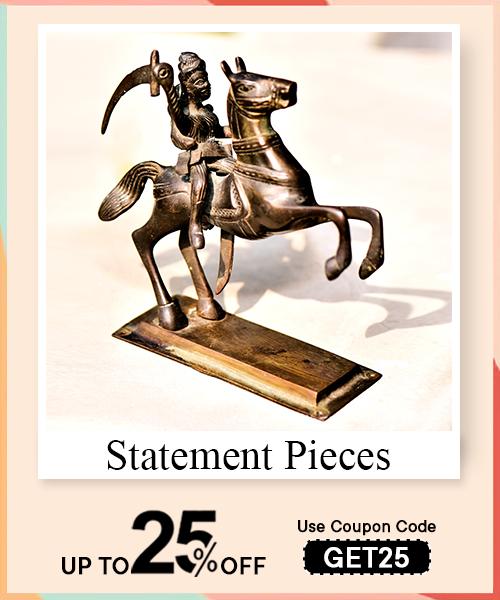Maa Durga, often revered as a manifestation of Adi-Shakti, represents the supreme power of feminine divinity in Hindu mythology. She symbolizes courage, divine power, and protection, standing as the ultimate destroyer of evil. Her nine forms, collectively known as Navadurga, are celebrated during the nine auspicious days of Navratri. This festival not only marks the triumph of good over evil but also embodies spiritual awakening and devotion.
In this article, we delve into the profound significance of each form of Maa Durga, exploring the rituals, offerings, and deep cultural essence tied to their worship.
Navadurga signifies the nine divine manifestations of Maa Durga, each representing unique virtues and blessings. Their worship during Navratri is steeped in ancient tradition and spiritual significance. Here’s a closer look at each form and the rituals associated with honoring them.
Maa Shailaputri, the first form of Navadurga, is also known as Maa Parvati, the daughter of the Himalayas. As a manifestation of steadfastness and strength, she symbolizes the beginning of the spiritual journey.
- Iconography: She rides a bull, holds a trident and lotus, and is associated with the earth element.
- Significance: Maa Shailaputri embodies devotion, grounding, and strength, offering a solid foundation for spiritual pursuits.
- Rituals: On the first day of Navratri, Kalashsthapana (installation of a sacred urn) is performed. Offerings of ghee, fruits, and sweets are made, symbolizing nourishment and prosperity.
- Cultural Belief: Worshippers seek her blessings to overcome life’s obstacles and achieve harmony.
Read More : Mahashivratri Special - Shiv Mandir decoration ideas
On the second day, Maa Brahmacharini is honored for her embodiment of austerity, wisdom, and spiritual enlightenment. She signifies a meditative state, inspiring devotees to pursue self-discipline and knowledge.
- Iconography: Depicted as a serene figure holding a japa mala (rosary) and kamandalu (water vessel), she radiates simplicity and purity.
- Significance: Her worship fosters perseverance, wisdom, and inner strength.
- Rituals: Devotees offer plain food like sugar and fruits, symbolizing simplicity and gratitude.
- Cultural Belief: Her blessings are said to aid in overcoming personal challenges and achieving spiritual growth.
Maa Chandraghanta, worshipped on the third day, is a symbol of bravery, grace, and serenity. Her crescent moon-shaped ornament (chandra) adorns her forehead, giving her the name Chandraghanta.
- Iconography: She rides a tiger and carries weapons, signifying readiness to battle evil forces.
- Significance: Maa Chandraghanta instills courage, success, and peace in her devotees.
- Rituals: Offerings of milk-based sweets such as kheer are made to honor her.
- Cultural Belief: Devotees believe her blessings remove fears and obstacles, bringing peace and prosperity.
Read More : Chaitra Navratri –History, Significance, Worship and Celebration
Maa Kushmanda, worshipped on the fourth day, is believed to have created the universe with her divine smile. She represents energy and vitality.
- Iconography: She rides a lion and is depicted with eight arms holding weapons, a rosary, and a pot of nectar.
- Significance: She symbolizes creativity, prosperity, and health.
- Rituals: Devotees offer malpua and other sweets, along with lighting incense sticks to seek her blessings.
- Cultural Belief: Her grace brings success, vitality, and well-being.

On the fifth day, Maa Skandamata is revered as the mother of Skanda (Kartikeya), the commander of the celestial armies. She embodies maternal love and protection.
- Iconography: She holds her son on her lap and is seated on a lotus, symbolizing purity and wisdom.
- Significance: Maa Skandamata is worshipped for her protective nature and the ability to grant wisdom and prosperity.
- Rituals: Offerings of bananas and fruits are made, symbolizing nourishment and growth.
- Cultural Belief: She blesses her devotees with clarity of thought and familial harmony.
Maa Katyayani, the sixth form of Navadurga, is associated with valor and courage. She is believed to have vanquished the demon Mahishasura, embodying divine wrath against evil.
- Iconography: She rides a lion and holds a sword, showcasing her fierce and protective nature.
- Significance: Worship of Maa Katyayani fosters courage, success in endeavors, and marital harmony.
- Rituals: Offerings of honey symbolize sweetness and the removal of bitterness from life.
- Cultural Belief: Devotees seek her blessings for strength and triumph over adversities.
On the seventh day, Maa Kalaratri is worshipped for her fierce and destructive form. She is the remover of all negativity and obstacles.
- Iconography: Her dark complexion, unkempt hair, and blazing eyes symbolize her formidable power.
- Significance: She represents protection, strength, and the destruction of evil.
- Rituals: Devotees offer jaggery and sweets, seeking liberation from fear and suffering.
- Cultural Belief: Worshippers believe she eradicates ignorance and instills courage.
Maa Mahagauri, worshipped on the eighth day, is revered for her radiant beauty and purifying powers. She signifies peace, wisdom, and prosperity.
- Iconography: Clad in white, she rides a bull and carries a trident and damru.
- Significance: She purifies her devotees of sins and fosters spiritual growth.
- Rituals: Coconut is offered as a symbol of purity and devotion.
- Cultural Belief: Her blessings are believed to bring peace and happiness.
The final day of Navratri is dedicated to Maa Siddhidhatri, who represents the culmination of spiritual pursuits and the bestowal of supernatural powers.
- Iconography: She sits on a lotus and holds a discus, conch, mace, and lotus flower.
- Significance: She embodies the fulfillment of desires and the achievement of spiritual enlightenment.
- Rituals: Offerings of sesame seeds are made, symbolizing protection and prosperity.
- Cultural Belief: Devotees believe her blessings bring spiritual wisdom and worldly success.
Navratri is marked by elaborate rituals that vary across regions but share a common thread of devotion and reverence for Maa Durga.
The festival begins with the installation of a sacred urn, symbolizing the presence of the goddess. The kalash is adorned with mango leaves and a coconut, signifying purity and prosperity.
Each day is dedicated to a form of Maa Durga, with specific rituals and offerings like fruits, sweets, and flowers to seek her blessings.
Devotees observe fasting to purify the body and mind, enhancing their focus on worship. Simple meals, devoid of grains, are consumed during this period.
In addition to religious observances, Navratri is celebrated with traditional dances like Garba and Dandiya, symbolizing joy and community bonding.
Navratri transcends religious boundaries, embodying the universal themes of triumph over adversity and the celebration of life. Each day offers an opportunity to connect with the divine and seek guidance for personal growth.
Read More : Fasting during Chaitra Navratri: Significance and Guidelines- Special Foods and Dishes Prepared During Navratri Fasting
By worshipping Maa Durga in her nine forms, devotees are believed to receive blessings of strength, prosperity, and spiritual wisdom. Navratri is not just a festival; it is a journey of self-discovery and renewal.















